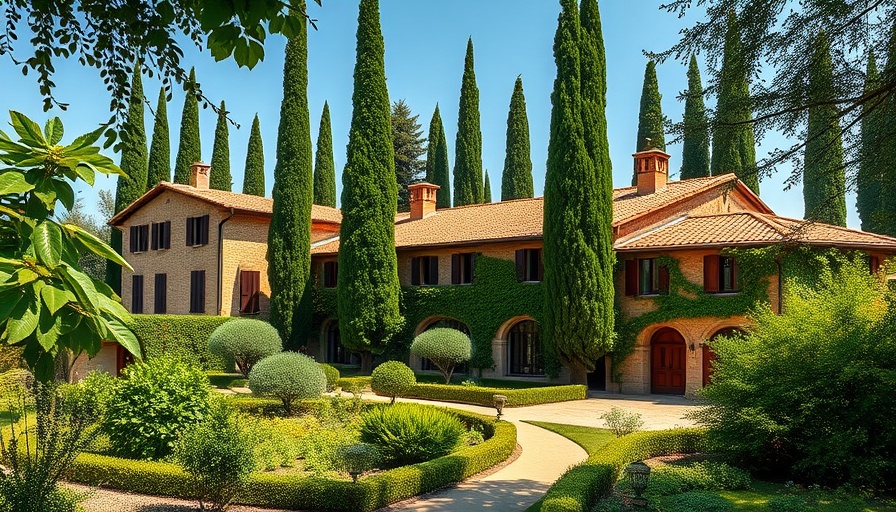
Cherishing the Timelessness of Tuscan Geography
Tuscany isn’t just a location; it’s a concept. It thrives in the heart of Italian culture and lifestyle, exuding simplicity and elegance through its rolling hills and stunning flora. To recreate this essence in your backyard, it's essential to focus on a few key plants that will capture this spirit. Imagine stepping into a backyard adorned with olive trees, underlined by rows of lavender and accentuated with cypress trees. This not only enhances your garden's beauty, but also serves practical purposes—think aroma therapy and natural privacy screens.
Planting the Icons of Tuscany
Five essential plants that can breathe life into your Tuscan garden include:
- Olive Trees: Quintessential to Tuscany, they symbolize resilience and continuity. Their gnarled trunks and silvery leaves evoke a sense of timelessness.
- Lavender: A sensory delight, lavender not only contributes color but also brings a fragrant, calming vibe to your garden, attracting beneficial bees and butterflies.
- Cypress Trees: Tall and dignified, their vertical growth draws the eye upward, offering structure and form to your garden while providing an iconic Tuscan silhouette.
- Rosemary: This hardy shrub thrives in hot, dry climates and releases delightful scents when brushed by the wind, doubling as a culinary herb.
- Grapevines: Perfect for creating shaded pergolas, they also yield delicious fruit, making your garden as functional as it is beautiful.
Mimicking Ideal Mediterranean Conditions
To ensure that your Tuscan-inspired garden thrives, mimicking the Mediterranean climate is paramount. That means ample sunlight—your plants will require a minimum of six to eight hours per day. Opt for well-draining soil that mimics their native habitat to ensure optimal growth. Most of these plants are drought-resistant, making them excellent choices for low-maintenance garden solutions.
Structuring Your Garden with Purpose
The arrangement of these plants can make a world of difference. Consider planting rows of olive trees along walkways akin to ancient Tuscan boulevards. This setup guides visitors through your garden's landscape, drawing them deeper into a sensory experience. Cypress trees can act as natural privacy screens along the perimeter, whispering tales of Italian villa life.
The Healing Power of Plants
Beyond aesthetics, plants have a significant impact on mental health. As gardening has become a therapeutic activity, crafting your own piece of Tuscany can serve as a form of escape from day-to-day stress. The tranquil sights and scents of a beautifully arranged garden can promote relaxation and mindfulness.
Fostering Community Through Gardening
There is also something to be said for the community aspect of gardening. Growing a Tuscan garden isn’t just about individual experience; it's a space for sharing. Invite friends and family to join in the planting or pruning, or simply use your garden as a backdrop for gatherings. This communal aspect mirrors the very spirit of Tuscany, where gardens serve as spaces for connection.
Conclusion: Awaken Your Garden Dreams
Whether you are a seasoned gardener or just starting, transforming your backyard space into a dreamy Tuscan retreat is entirely doable with the right plants and arrangement. Creating this space does not just beautify; it enhances your quality of life. Start today, and let your backyard reflect the timeless beauty of Tuscany, inviting serenity and joy into your everyday.
For more practical insights, connect with ProHomeGuides and discover expert tips on home improvement and gardening.
 Add Row
Add Row  Add
Add 




Write A Comment